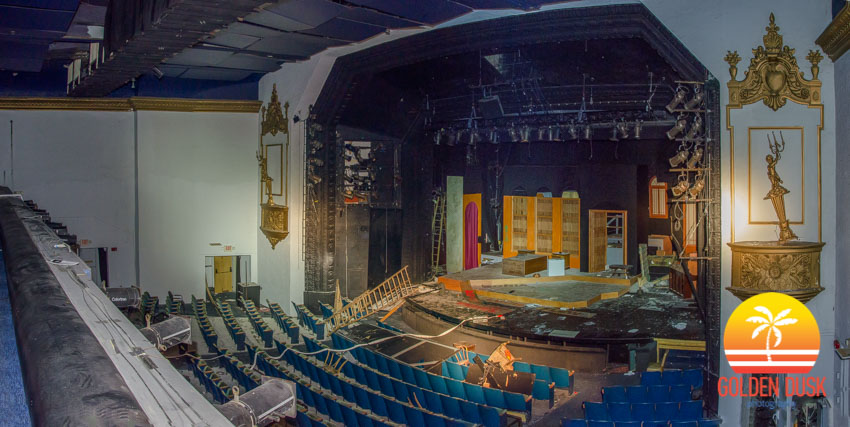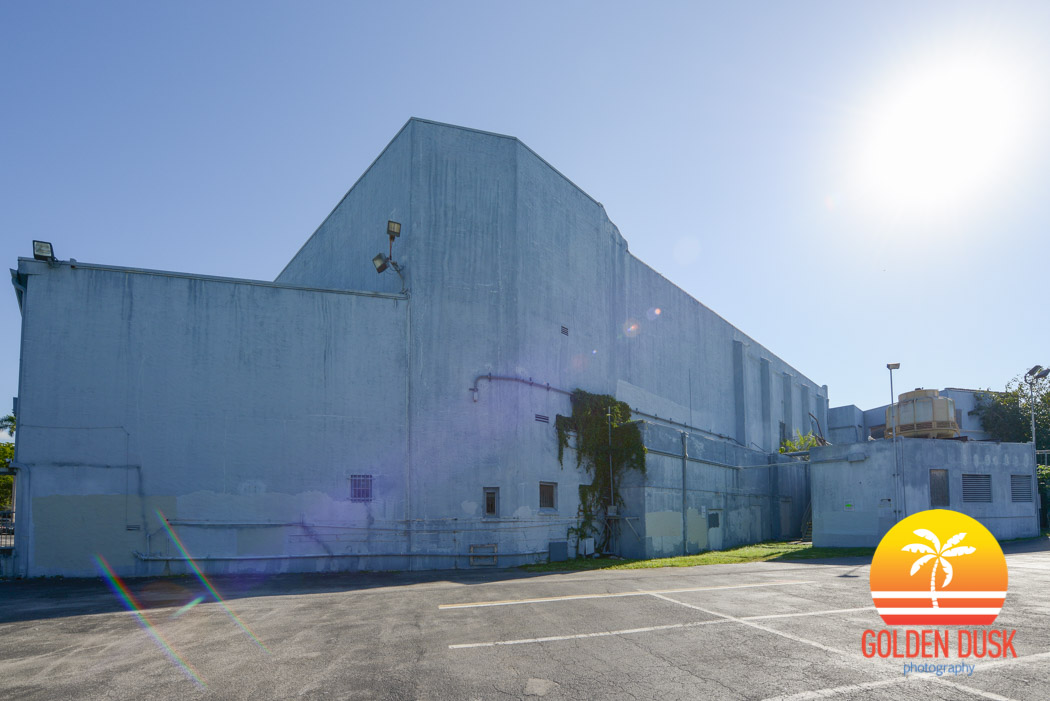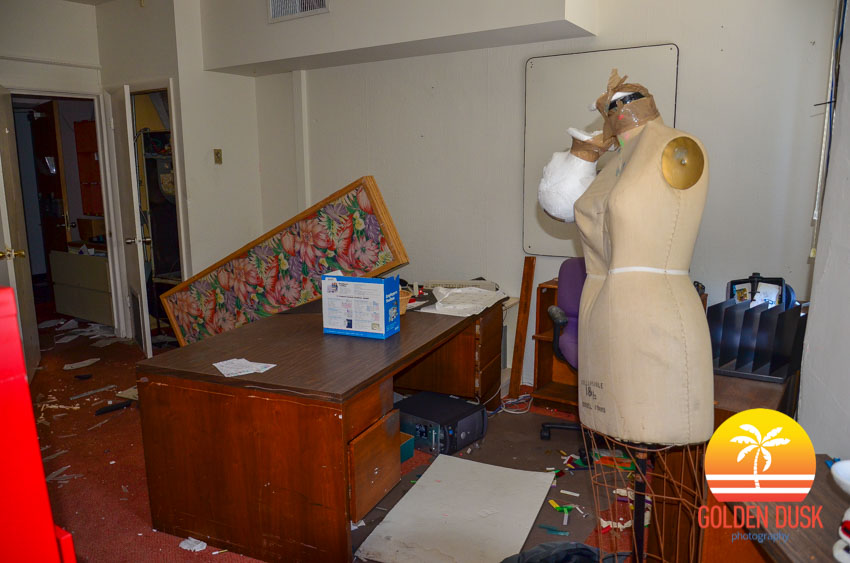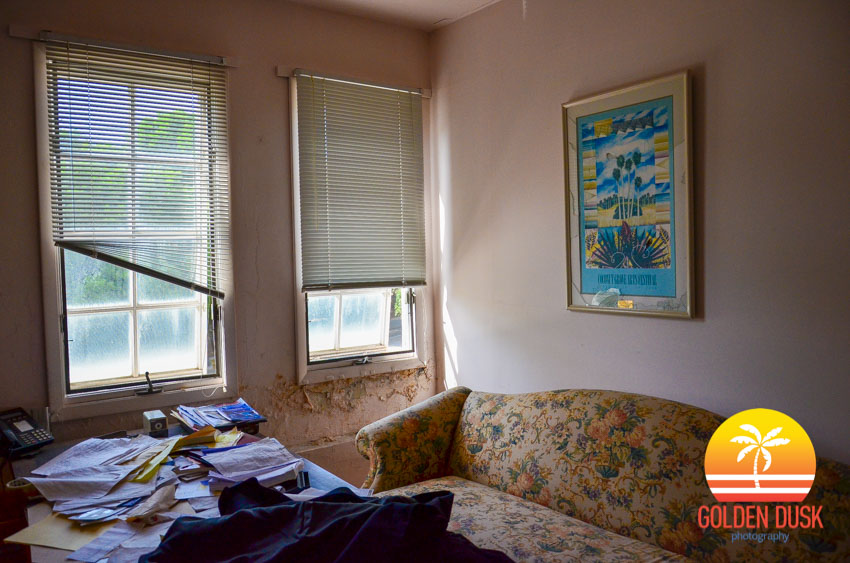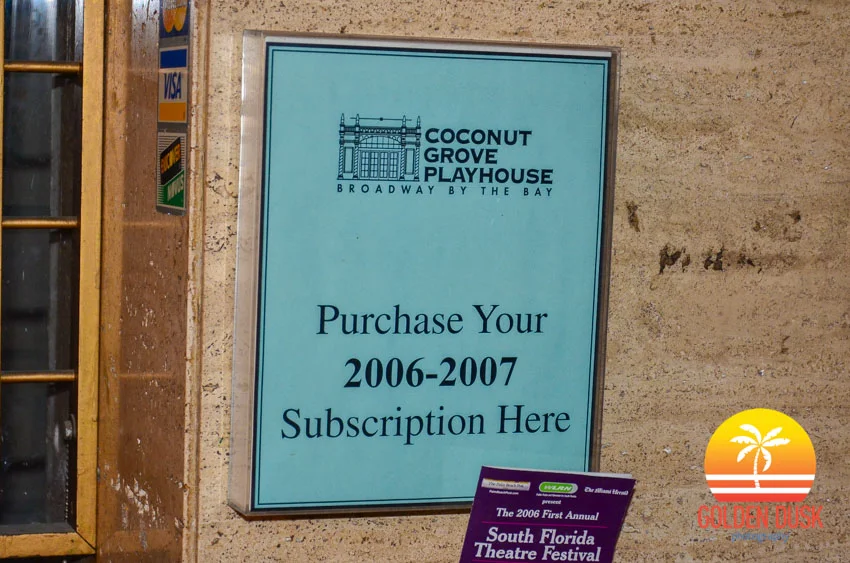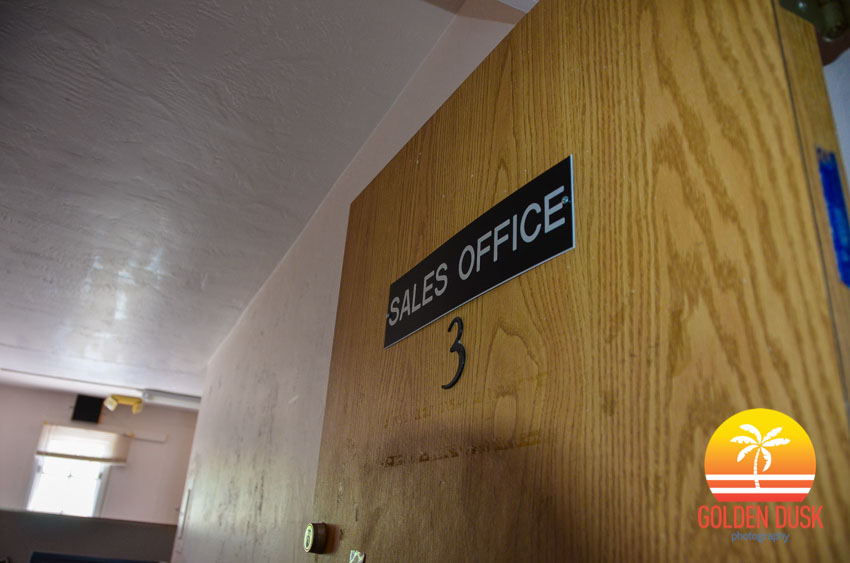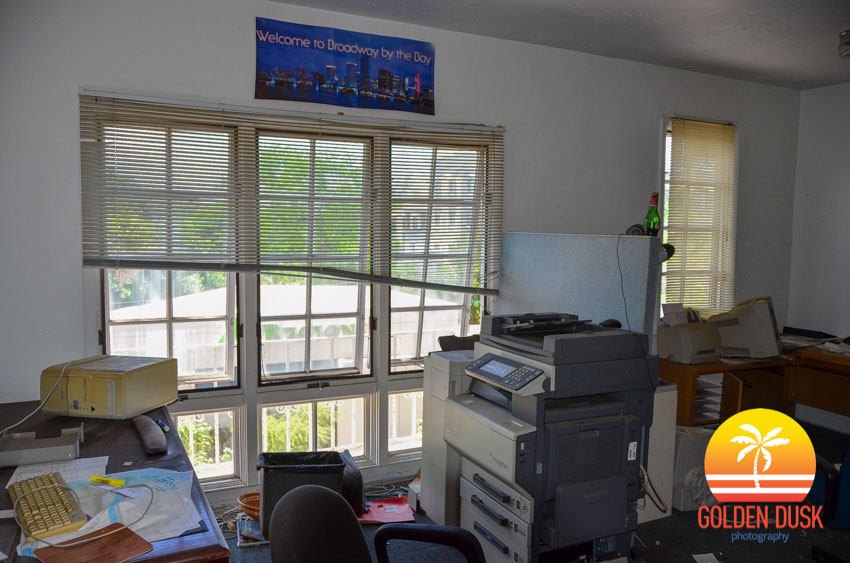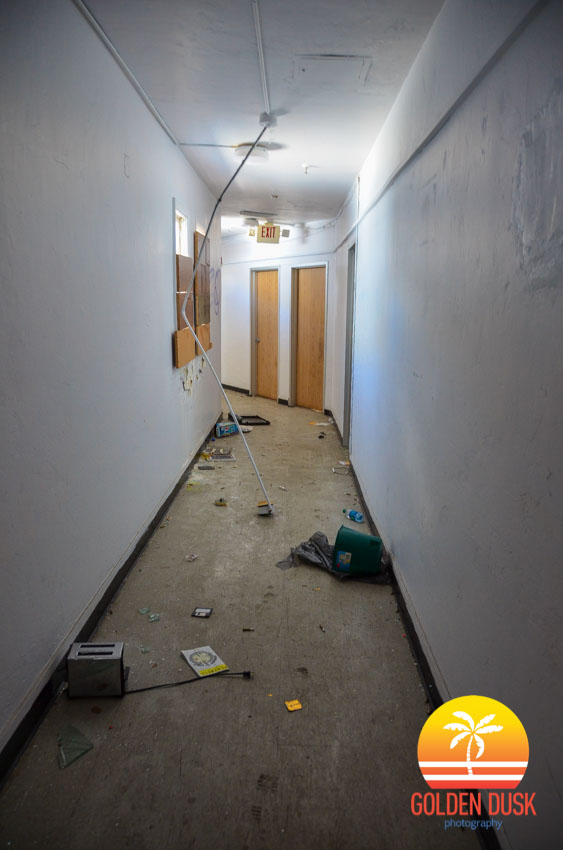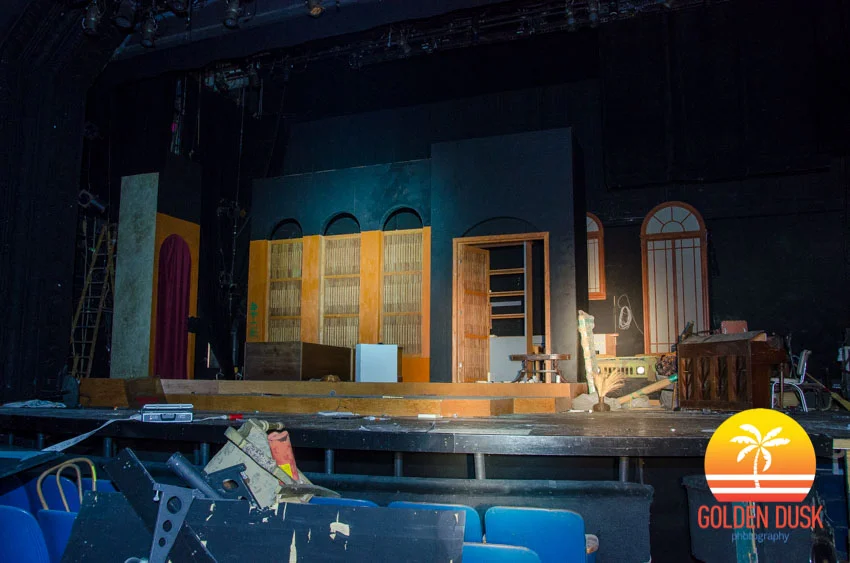Inside the Coconut Grove Playhouse
TBT (May 1, 2017) - Below are photos from inside the abandoned Coconut Grove Playhouse, which still remains abandoned after almost 13 years. The Miami Preservation Board recently denied a $20 million plan to restore the Playhouse, but would also include tearing down the 1100 seat auditorium in the back.
Built in 1926, and located at the corner of Main Highway and Charles Street, the Coconut Grove Playhouse opened 90 years ago on January 1, 1927, with a D.W. Griffith production of Satan of Sorrows that was attended by over 1,500 people. The building was originally named the Coconut Grove Theatre.
The Coconut Grove Theatre was built by Miami locals Irving J. Thomas and Fin L. Pierce as movie theater for the Paramount Enterprises Chain and the largest in Miami. The theater was designed by architect Richard Kiehnel of Kiehnel and Elliot to resemble a Spanish Rococo Palace in the style of Mediterranean Revival. The building originally had seven stores on the ground level, ten offices on the second floor and the third floor were apartments. It had the latest Wurlitzer pipe organ and had a very modern amenity at the time - air conditioning.
Before the theater opened, Irving J. Thomas and Fin L. Pierce sold the building to Paramount Enterprises and the theater thrived until the Great Depression of the 1930s hit and attendance dropped significantly. The Coconut Grove Theatre eventually closed in the mid-1930s until it was used to train Air Force Navigators during World War II.
After World War II, the building become closed and abandoned once again only to be purchased by George Engle in 1955 for $200,000 to create a performing arts theater. After years of abandonment, the theater was in severe disrepair and George Engle hired architect Alfred Browning Parker to update the building into a more modern and comtemporary look at a cost of $700,000. Parker eliminated the ground level store fronts, removed the grand parapet roof, flattened the roofline and changed most of the interiors. The Coconut Grove Theatre was then renamed the Coconut Grove Playhouse and re-opened on January 3, 1956 with a production of Samuel Beckett's Waiting For Godot.
Suffering financially, the Playhouse would close once again in 1960, before being purchased by producer Zev Buffman in 1966 for $1 million, after leasing it for several years. In 1970, the Playhouse was purchased from Buffman by actor Eddie Bracken for $744,820. Previously, the Playhouse would close for the Summer season, but in the Summer of 1971, the building remained opened on weekends for a Summer music series that was played by musicians such as Ray Charles, Dave Brubeck, Dizzy Gillespie and Ramsey Lewis. However, the success was short lived and by December 1971, Bracken's company was under financial mismanagement and he could not pay creditors over $1 million. The Coconut Grove Playhouse was later sold at auction on the Miami-Dade County Courthouse steps when debts were not paid.
Arthur Cantor and Robert Fishko bought the Playhouse and reopened on December 5, 1972 with a production of Man of La Mancha starring Robert Horton. The pair made repairs to the building, which included a chain link fence and exterior lighting for the parking lot with uniformed guards patrolling the grounds to make sure patrons were safe after dark. Cantor and Fishko later sold the Playhouse to the Players Repertory Theater in 1977 and was renamed the Players State Theater. Bob Kantor was named as artistic director.
In 1980, the Players State Theater was bought by the State of Florida by purchasing its mortgage for $1.5 million and was again renamed the Coconut Grove Playhouse. In December 1982, Academy Award winning actor José Ferrer replaced Bob Kantor as the artistic director of the Playhouse. Ferrer's time did not last long as he resigned from his position in January 1985 from which he was only paid $1 a year and claims of poor treatment from the media.
Arnold Mittelman was immediately hired as the producing artistic director, which meant he was charge of the artistic and business side of the Playhouse. Mittelman would be replacing G. David Black who was fired in August 1984 as managing director. The Playhouse board agreed to pay Mittelman a $100,000 yearly salary, $1250 per month towards mortgage payments on a new house and given a Cadillac to drive. Mittelman would remain as producing artistic director until 2006. During this time, actors such as Denzel Washington, Jessica Tandy and Liza Minnelli would grace the stage of the Coconut Grove Playhouse. On November 22, 1996, David Letterman brought his show to Miami for one night, with Jimmy Buffett as the musical guest and held the event at the Coconut Grove Playhouse. Letterman even stayed at the Mayfair Hotel down the street from the Playhouse.
In 2004, the State of Florida transferred the title to the Coconut Grove Playhouse Inc. with the sole purpose as being used as a live theater. The Playhouse was then able to secure $20 million in a 2004 bond referendum that allowed Miami-Dade to borrow $15 million against property taxes and $5 million from hotel taxes that would go towards renovating the property.
Due to as much as $4 million in debt, the Coconut Grove Playhouse suddenly shut down in April 2006 when its doors closed permanently and the locks were changed. Employees were allowed back into the building a few weeks later for only 3 hours to retrieve personal belongings and to never enter again. The last play in the theater was Sonia Flew, starring Lucie Arnaz, and was only able to run for 10 days of its four week run despite Arnaz matching $50,000 from Bacardi in donations and another $25,000 from the family of Arnold Mittelman. Mittelman eventually resigned as producing artistic director on May 16, 2006, as his salary had climbed to $220,000 a year by 2003. He was accused of taking a $125,000 loan from the Coconut Grove Bank on March 30, 2006 to pay staff salaries, as well as his own. The State of Florida demanded that the Playhouse board cover the the $125,000 loan plus interest that they could not pay, which only furthered the demise of the Playhouse.
Since the doors closed on the Coconut Grove Playhouse, vagrants and vandals managed to get into the building and were sleeping in the guest apartments for actors on the 3rd floor. The rooms were littered with empty beer cans, pizza boxes and other garbage. Graffiti was visible in certain parts of the building, but mostly confined to the main lobby.
For the past eleven years, the Coconut Grove Playhouse has sat abandoned and in disrepair, but in January 2013, the Actors’ Playhouse in Coral Gables and the University of Miami Library Special Collections Division were able to get access inside the building and save many items left behind. Documents - including photographs, costumes, scripts, videotapes, scrapbooks, posters and marketing materials were put away in up to 800 boxes to be stored in a climate controlled storage at the University of Miami. Also saved were playbill's from every production that ran at the Playhouse that was enclosed in a frame in the lobby.
On October 19, 2012, the State of Florida re-assumed ownership from the Coconut Grove Playhouse non-profit board using a clause in the 2004 agreement that it be used as a live theater. An agreement was then made in January 2014 between Miami-Dade County and FIU that would allow them to lease the Playhouse from the State of Florida for 50 years, with two 25 year renewal options. The deal allowed the city to waive over $1.5 million in building violation fines that mounted over the years since 2006. The Miami-Dade Parking Authority was also given a deal that allows them to manage an independently financed parking garage on the site for paying owed creditors.
Miami-Dade Commissioners approved the Coral Gables GableStage, which produces plays in the 150 seat theater at The Biltmore Hotel, to run and manage a new redesigned 300 seat theater in April 2015. Also part of the approval was hiring architect firm Arquitectonica to design a new master plan for the Playhouse with work starting in September 2015.
After 15 months of study and research, Arquitectonica and preservationist architect Jorge Hernandez presented plans for the new designed Coconut Grove Playhouse in December 2016. These plans included restoring the the "v shaped" building to its original 1926 design by Richard Kiehnel, restoring the original seven storefronts and bringing back the original "fly tower" roofline that was eliminated in 1955 under Parker. The 1,100 seat theater in the back will be demolished and replaced with a new, modern 300 seat theater that will separate it from the "v shaped" building with an open courtyard. Plans also have a new parking garage with 500 spaces and 35 residential units, with retail on the ground level to be located on the surface parking lot on the North side.
The master plan for the new Coconut Grove Playhouse was approved April 4, 2017 by Miami's Historic and Environmental Preservation Board by a vote of 4-1. However, an appeal has been filed by Coconut Grove residents Barbara Lange and Katrina Morris on the decision made by the Preservation Board and will be heard by the Miami Commission on June 22.

